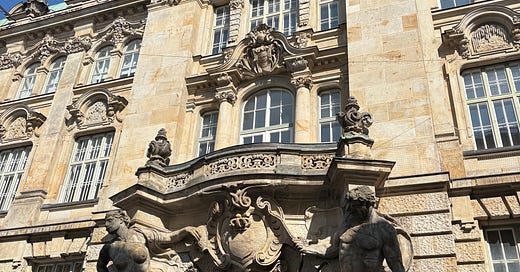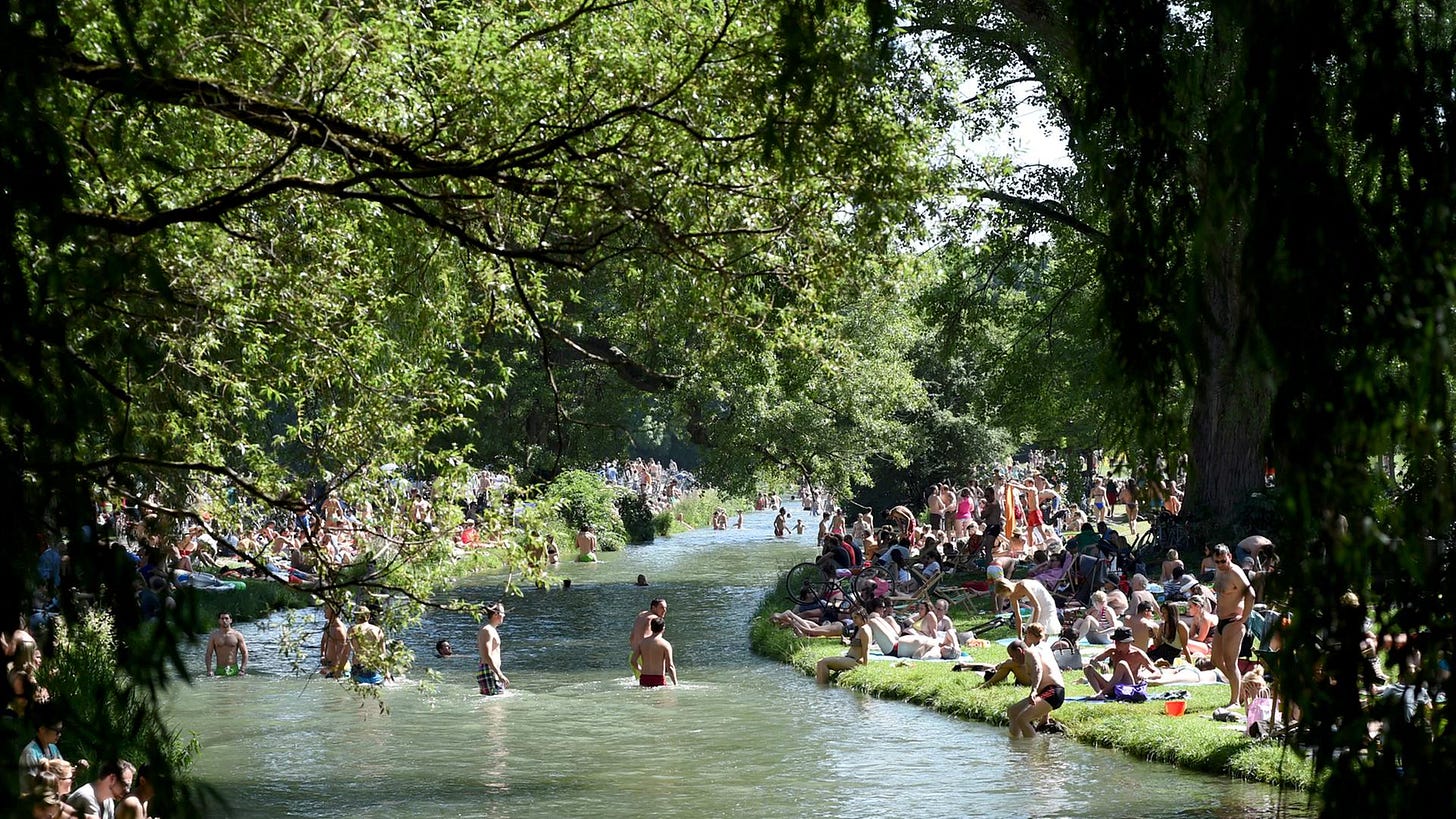I’m in Munich as I write this. (Apologies to regular readers for my lack of production of late. I’m in a travel stretch. Back at it soon.) And there is nowhere better than Munich to contemplate a very old question: When is a thing that thing?
The Ship of Theseus is a famous old thought experiment that gets at the problem: Imagine you have one of those ancient Greek wooden ships. One plank is rotten. You replace it. Is it the same ship? No one would hesitate to say yes. What if you replace another plank? The same. And another? And another? What if there is only one original plank left? What if you replace that final plank?
Is it still the same ship?
Munich is a beautiful city whose centre delivers everything tourists expect when they flock to Europe: gorgeous old architecture, twisty streets, palaces, statues, and all the rest.
But that’s Munich in 2025.
Thanks to Hitler’s war (Darryl Cooper is a fool; please don’t listen to or read him), Munich in 1945 was mostly piles of rubble. The same was true of most major German cities. Each city then had to decide to what extent it would reconstruct what had been destroyed or build something new.
Decisions varied from city to city, with some (Munich) favouring reconstruction and others (Frankfurt) leaning toward starting fresh. (Editorial aside: The timing was unfortunate, given the state of architecture in the mid-20th century. Anyone who has been to both Frankfurt and Munich will likely agree with me that Munich made the right decision.)
But even within projects, how much would be reproduced varied widely. Sometimes portions of original buildings still standing were built on; in others, original materials were used as much as possible; but in some cases, buildings were simply reproductions based on old blueprints and photographs.
And the work still goes on. I’m down the street from Odeonsplatz, which is dominated by the 17th-century Theatine Church and the 19th-century Feldherrnhalle (general’s hall) with its two enormous, glowering lions. But the Feldherrnhalle is boarded off as it undergoes restoration. The church, as you may have guessed, was badly damaged in the war. What tourists ogle today is mostly a reproduction.
There’s a famous photograph taken outside the Feldherrnhalle, with the church in the background, taken on August 2nd, 1914. A crowd cheers the news that Germany has declared war on Russia. It was later discovered that in the midst of the crowd is a grinning young lad from Austria by the name of Hitler. Today, if you are so inclined, you can go and stand in the very spot where the little shit stood.
Or can you?
Given how much of what you see around you is reconstruction, is it really the same spot?
(I’ll set aside the fact that the universe is expanding, which means we can never stand in the same spot twice, in an absolute sense. Never think about that after a bong hit.)
There’s a subtler and much more pleasant illustration a short walk from Odeonsplatz.
The Englischer Garten, as every tourist discovers, is a gorgeous park in the heart of Munich. Running alongside the Isar River, the park is considerably bigger than Manhattan’s famous Central Park, and considerably wilder, with streams, ponds, fields, and substantial stands of thick, lush forest. Beer gardens aside, it is a swathe of nature in the heart of a major city. Or so it seems.
But note the name. Englischer Garten means what an English-speaker assumes: It is “English Garden.” The name doesn’t honour anyone. It is descriptive. “English” was a school of landscape design originating in England in the early 18th century.
In the century prior, French formalism had dominated landscaping across Europe: Straight lines, geometric shapes, symmetry, bushes trimmed by armies of gardeners to form perfect cones and pyramids, that sort of thing. Every palace and country manor had such rigid, screamingly artificial landscaping.
The English style replaced all that with nature. Or rather, “nature.” Landscapers would level or build hills, clear or plant forests, drain waterways and dig new ponds and streams — whatever was needed to create idealized landscapes with the perfect blend of field, forest, and water. In time, what was constructed came to look wonderfully natural, despite its wholly artificial origins.
So what is this thing in the midst of Munich? It looks like nature. It feels like nature. There is an abundance of natural organisms and processes at work within it. Is it nature? I don’t know. Any more than I can say at what point, if any, the Ship of Theseus ceases to be the Ship of Theseus.
Insert shrug emoji here.
Incidentally, the man who started the work on the Englischer Garten was an American, Sir Benjamin Thompson. Born in Massachusetts, Thompson was a Loyalist. After the American Revolution, or First Slave-Owners Rebellion as it is known in this newsletter, written by a Loyalist, Thompson sailed for England, and later worked in Bavaria.
I mention all of this only to have the opportunity to once again display my allegiance to the much-maligned King George III.
Auf wiedersehen.







Need a few good pints of beer, currywurst, and maybe some spezi to sober up
I was honestly disappointed in the Englischer Garten. I mean, it's fine and it's better than a million cities that don't have anything like it. But I definitely rate it lower than similar public spaces in London, Paris, and New York.